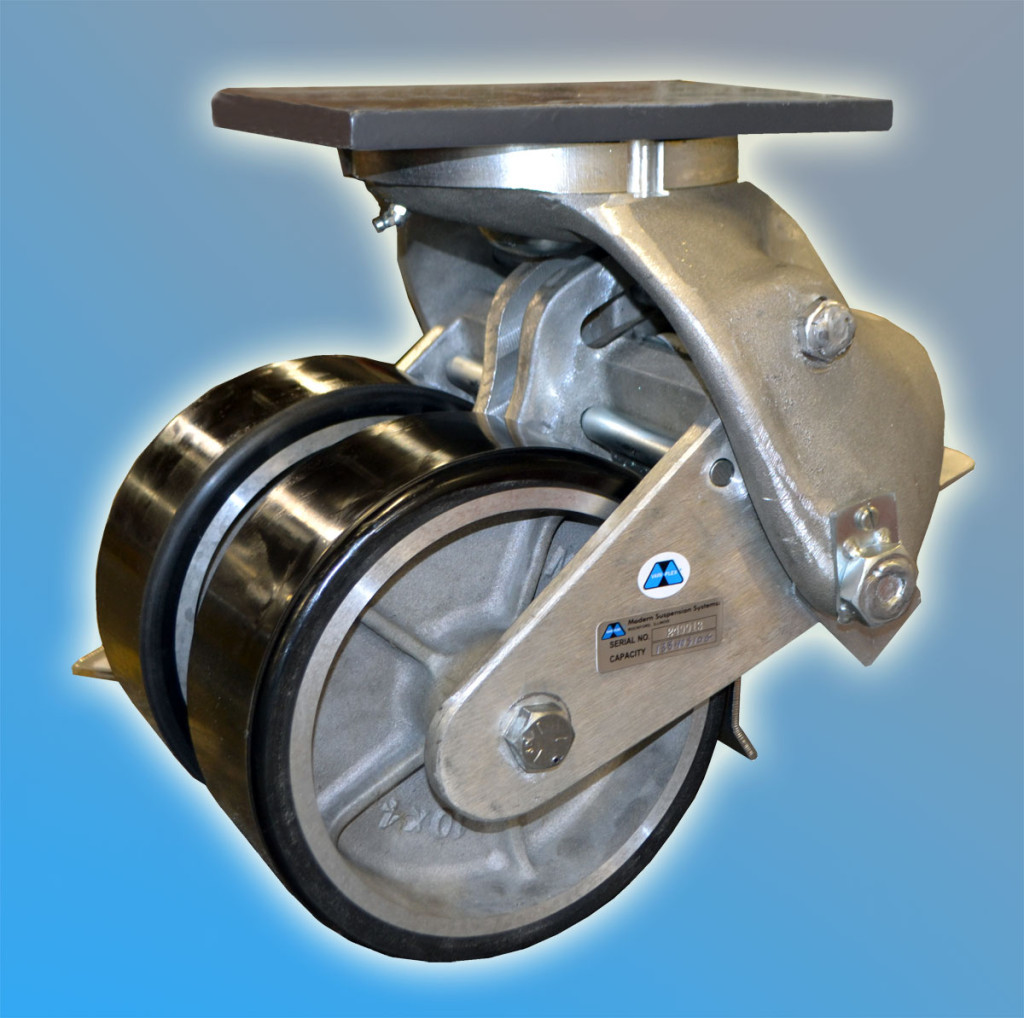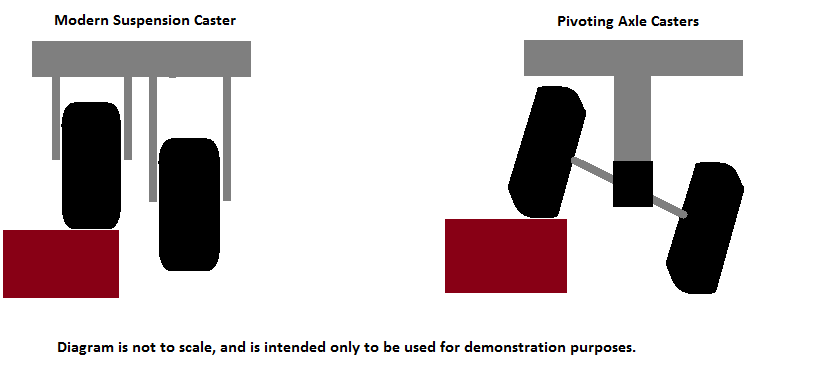What is the difference in Shock Absorbing Casters?

Shock absorbing casters offer many benefits, including
- Protecting cargo from damage
- Reducing noise due to vibration
- Easier to roll than conventional casters when the flooring is cracked, uneven or encountering obstructions like thresholds
- Reduces risk of damage to flooring
However, not all shock absorbing casters actually create a benefit. Shock absorbing casters are usually spring loaded, and those springs deflect when pressure is applied to them. If the caster uses the wrong springs, it could potentially do more harm than good. If the springs are too firm, they could actually cause more vibration and potentially noise and damage to contents. If the springs are not firm enough, it would be like there is no shock absorption at all. Therefore, it is very important to provide an accurate weight for the load. Exceeding the rated capacity on most spring loaded casters could render them useless, and to light of a load, could create excessive vibration.
There are other factors to consider when choosing a shock absorbing caster, such as how the springs are positioned. Most shock absorbing casters use a clam shell design for the legs and place a spring in between to keep the clam shell from closing. This design allows for significant variation in cargo load weights and a lower overall height, when compared to other shock absorbing casters. However, when the cart has no load, the springs have zero deflection, if carts are transported empty, then they are likely to have significant vibration when encountering an obstruction, and potentially create noise.
If the casters are consistently carrying the same amount of weight, then vertical mounted spring (VMS) casters may be the right choice VMS casters, as the name implies, feature springs mounted vertically that are retained on a rod with threaded ends. The benefit of this design is that their will be no deflection of the springs when loaded with the rated load capacity. VMS casters also minimize vibration when the cart is empty. These casters tend to have a greater over all height than clam shell design shock absorbing casters.
If your application requires dual wheel shock absorbing casters, consider casters with independent suspension. Dual wheel shock absorbing casters may be built on one axle, or the wheels may be mounted in a manner that keeps them independent of one another. As the diagram below illustrates, independent suspension dual wheel casters, react to an obstruction with little to no impact on the other wheel on the same caster. When a single axle, dual wheel caster encounters and obstruction, both wheels are impacted.

If the impact is large or hard enough, it could impact the entire cart, increasing the risk of vibration, tilting of the cart or significant levels of noise. Also, there is a greater risk of failure and potentially injury, because excessive stress is put on one wheel. Independent suspension casters essentially function like two separate casters on one top plate, when one wheel incurs an obstruction that is within the range of deflection of the springs, that wheel will react to the obstruction without affecting the other wheel or cart. Having both wheels constantly supporting the load significantly reduces the risk of failure due to excessive stress.
Caster Concepts offers several lines of shock absorbing casters, including Modern Suspension Systems casters, which offer independent suspension shock absorbing casters in steel or aluminum casters.
